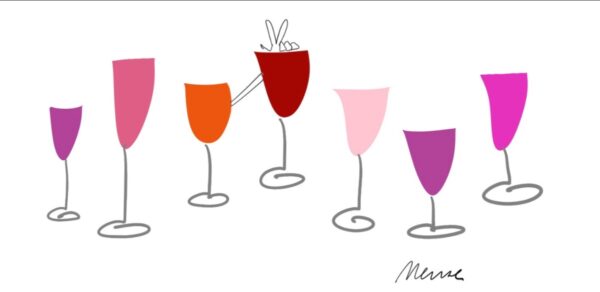
Wine grape varieties don’t generally send out end of year letters as many families do. But if they did, some of the more interesting would surely be those leaking from the pens of the Sangiovese family — a large and diverse vinous clan with claims to a long and noble history.
Some sense of the extreme antiquity of this cultivar can be spied in the etymology of the name by which it is best known: blood of Jove. But believe this and you will already have been led astray. Sangiovese is actually not of ancient Etruscan origin — as is often claimed — but a relative come-lately, begotten as a result of some torrid 18th century carryings on between two senior varietals of antediluvian pedigree, the somewhat obscure Cigliegiolo and the wholly obscure Calabrese Montenuovo. This, at least is what we know from recent DNA analysis.
Even so, 300 years of history is, as we rather awkwardly say today, not nothing. During that time, Sangiovese has been a busy little propagator in its own right, to the point that it leaps immediately and correctly to mind when the answer “Italy’s most-planted red wine grape” is proffered on Jeopardy! (You could have been a little quicker on that buzzer, reader).
Though it may not have Etruscan roots, it has plumped them down firmly in modern Tuscany, to the point where most red wines one encounters from this region are very likely either wholly or partially made with its cooperation, though this fact is often obscured by a raft of aliases any con man would be proud of. Among them, Prugnolo Gentile, Brunello, Morellino and Nielluccio.
You might not see Sangiovese called out on their labels, but wines with the appellation designations Chianti Classico (historically a multi-varietal blend but increasingly dependent on Sangiovese), Rosso di Toscana, Brunello di Montalcino, Rosso di Montalcino, Morellino di Scansano, Vino Nobile di Montepulciano and Rosso di Montepulciano all rely exclusively or primarily on it. Outside Tuscany, it makes major contributions to the red wines of Umbria, the Marche and Emilia Romagna.
As you might imagine with so many permutations, not to mention blending partners (Canaiolo, Mammolo, Cabernet Sauvignon, Merlot, Malvasia and Trebbiano) Sangiovese can be a master of disguise. My favorite examples are those that put some lovely, foresty and balsamic aromas in the forefront and back them up with dark cherry fruit, solid mid-palate persistence, fresh acidity and comfy fine-grained tannins.
Interested in becoming a friend of the family? Don’t wait for the Christmas card. Just pop into the Wine Corner and say ciao.